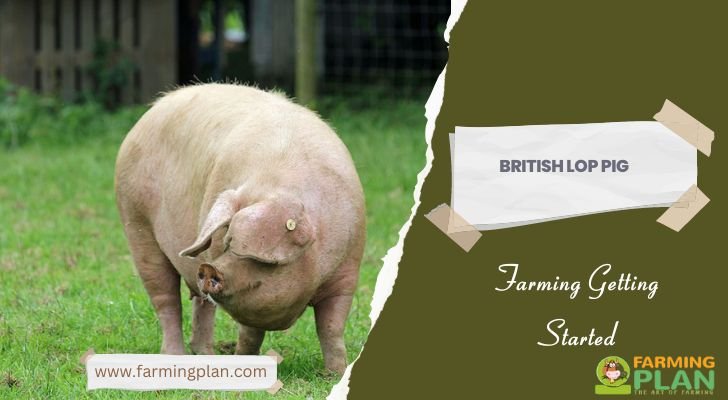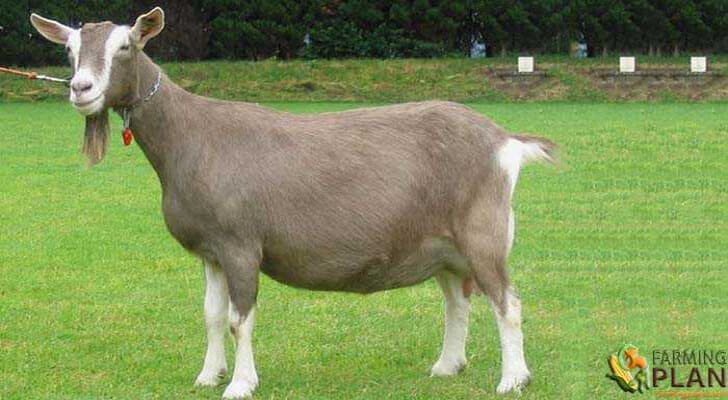If you have been contemplating getting into pig farming, then the British Lop may be the ideal breed of pig for your needs. This traditional British breed is renowned for its hardy nature and provides high quality meat with well-marbled fat. Not to mention, their large size makes them great as producers of both bacon and pork chops! Whether you’re an experienced livestock farmer looking to diversify your stock or a complete beginner seeking advice on how to start out in this business venture, our guide will provide all the information you need on how to raise these noble swine. From feed requirements and housing needs to tips on health care management and safeguarding against disease – everything required when it comes to British Lop Pig Farming can be found here.

History & Origin Of British Lop Pig
The British Lop Pig is a rare breed of pig that has a fascinating history and origin. The breed dates back to the 16th century and was initially developed for its high-quality meat. Over the centuries, the breed faced many challenges, including the introduction of foreign pig breeds that threatened to displace it. However, dedicated breeders kept the British Lop lineage alive, and today, it is recognized as an important breed in preserving the genetic diversity of pigs. British Lop Pigs are known for their gentle nature and their remarkable ability to thrive in a free-range environment. They have a distinctive look that includes long, floppy ears and a broad, deep body. This breed has a fascinating story that speaks to the resilience and ingenuity of people who sought to protect and nurture it over centuries.
Characteristics
The British Lop Pig is one of the oldest and most distinctive pig breeds in Britain. This breed is known for its muscular and sturdy build, with a broad and deep body that gives it a unique appearance. Its coat is typically white, soft and luscious, and its floppy ears and distinctive snout make it instantly recognizable. What sets the British Lop apart from other breeds is its gentle and docile temperament, which makes it an ideal choice for those looking to raise pigs for meat production. Additionally, this versatile breed is capable of adapting well to different farming systems, making it a great choice for small-scale and commercial pig farming operations alike. Its unique characteristics make the British Lop a valuable asset to the British farming industry and an increasingly popular choice among pig farmers all over the world.
Feed
When it comes to raising British Lop Pigs, you want to make sure you’re providing them with a diet that meets all of their nutritional needs. These heritage pigs are known for their sweet disposition and delicious meat, but they also require a balanced diet to ensure they stay healthy and happy. Whether you’re raising them for personal consumption or for market, feeding them a diet of high-quality grains, protein, and supplements is essential. With the right care, your British Lop Pigs will thrive and provide you with a delicious and rewarding experience.
Usage
The British Lop pig is a heritage breed that has been around since the 17th century, known for its distinctive droopy ears and docile demeanor. Not only are these pigs a pleasure to be around, but they are also great for meat production because of their ability to thrive on forage-based diets. They are a hardy breed, able to withstand harsh weather conditions and illnesses. British Lops are also great mothers, and are known for their strong maternal instincts, which ensure the healthy development and growth of their piglets. Whether for meat or as pets, British Lops are a unique breed that is sure to make a lasting impression.
Special Feature Of British Lop Pig
The British Lop pig is a special breed well known for its superior taste and impressive physique. From its distinctive long ears and arched back to its robust meaty flavor, this iconic pig has captured the hearts and palates of many food enthusiasts around the world. With a rich history dating back centuries, the British Lop has long been a symbol of tradition and quality. Known for their gentle temperament and easy-to-manage nature, farmers have found them to be ideal for breeding and raising for meat production. Whether grilling, roasting, or smoking, the British Lop’s meat is sure to delight any meat lover’s taste buds.
Understanding
British Lop pigs are one of the rarest breeds of pigs in the UK, and it’s essential that we understand their unique needs to ensure their health and wellbeing. These charming pigs have a distinctive look, with long, lop ears and a stocky, muscular build. While they are confident and sociable, they do require plenty of space to roam, root and forage. They also need a balanced diet that meets their specific nutritional requirements, particularly as they can be prone to obesity. By understanding their needs, we can provide these wonderful pigs with the best possible care and ensure that this incredible breed continues to thrive.
Finding Quality
As a breeder, finding quality breeding stock can be a tricky task. It involves diligent research, scrutiny and knowledge of the breed. A reputable breeder must not only produce healthy offspring, but also ensure that their lineage is free of genetic disorders and undesirable traits. It is vital to engage with breed clubs and forums to gain insight into the breed’s standard and characteristics. Furthermore, visiting local shows to observe and learn from experienced breeders can provide valuable knowledge on what to look for in your breeding selection. Remember, breeding quality stock requires patience and commitment to produce high-quality offspring that meet or exceed breed standards.
Housing Requirements
Finding the perfect place to live can be a daunting task. One of the most important factors to consider is the housing requirements that fit your needs. Whether you are a student, a family with children, or someone with limited mobility, there are specific features and amenities that can make a home comfortable and functional. Some of the most common housing requirements include accessibility, safety, and proximity to public transportation and essential services such as grocery stores and healthcare facilities. Whatever your needs may be, it is important to prioritize them when searching for a new place to call home. By doing so, you can ensure that you find a space that meets your unique requirements and allows you to live your best life.
Breeding
The practices of breeding, birthing, and weaning animals are essential aspects of animal husbandry. Whether it’s for the production of meat, milk, or wool, these practices must be handled with care to ensure the health and welfare of the animals. Breeding involves selecting the ideal male and female animals to mate and produce offspring with desirable traits. Birthing involves providing proper care and attention for pregnant animals and ensuring safe delivery of new-borns. Weaning involves gradually transitioning young animals from their mother’s milk to solid food. Each stage requires proper training and knowledge for those involved in animal agriculture. With responsible breeding, birthing, and weaning practices, we can ensure high-quality animal products and maintain sustainable farming practices.
FAQ
Where do British Lop Pigs come from?
British Lop pigs are an ancient breed of pig native to the United Kingdom. They were first developed in England over 1,000 years ago and were used primarily as a source of food and labor. Today, these pigs are still bred by farmers all over Europe, particularly in Italy, Spain and Portugal.
What do British Lop Pigs look like?
British Lop Pigs are a large-sized heritage breed of pig, dating back to the 1700s. They have distinctive long, drooping ears which give the breed their name – ‘lop’ being Old English for ‘hang down’. The average weight of an adult British Lop Pig is between 1,200 and 1,500 pounds (545–682 kg).
How big do British Lop Pigs get?
British Lop Pigs are the largest of the six recognized breeds of domesticated pigs. They are known for their huge size and considerable weight.
Conclusion
All in all, the British Lop Pig is a unique breed whose history and origin solidifies its status amongst antique breeds. Additionally, they possess unique characteristics beyond just bulbous eyes and lop ears; their distinct diets are also noteworthy to consider. The most significant factor when caring for this breed is understanding their needs, which includes quality breeding stock, housing requirements, and breeding, birthing and weaning practices. If you’re interested in learning more about these pigs or how to care for them, look no further than the American British Lop Pig Society’s website!


